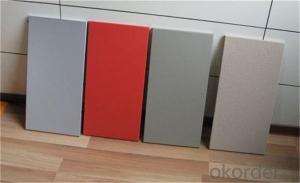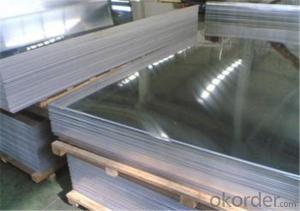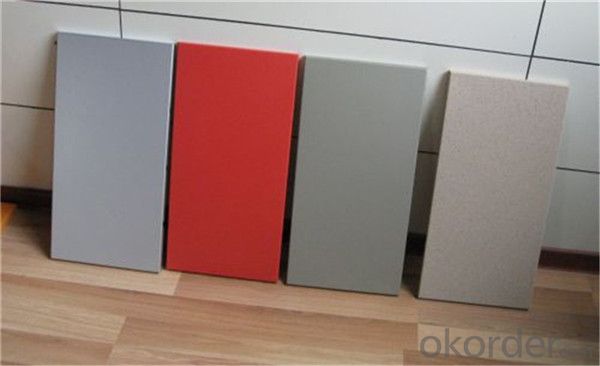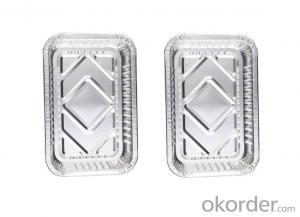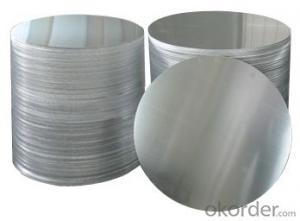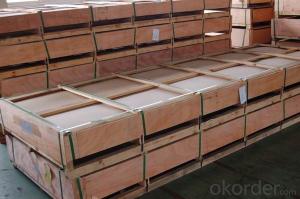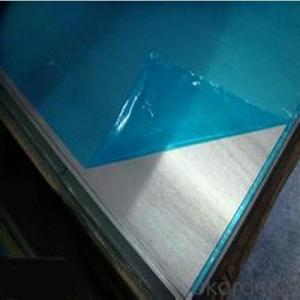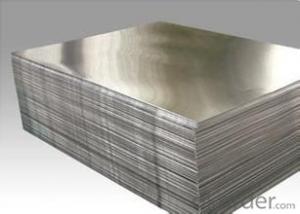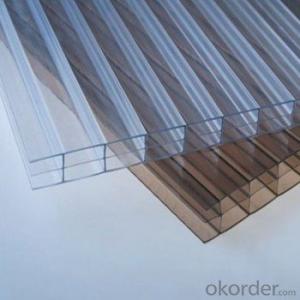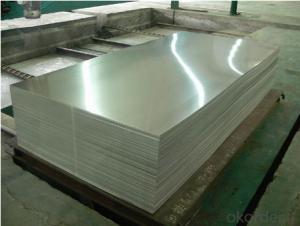Aluminium Sheet With Polykraft Paper For Moisture Barrier
- Loading Port:
- Shanghai
- Payment Terms:
- TT OR LC
- Min Order Qty:
- 5 m.t.
- Supply Capability:
- 100000 m.t./month
OKorder Service Pledge
OKorder Financial Service
You Might Also Like
Specification
Specifications
Grade
| 1000 Series: 1050 1060 1070 1100 1200 1235 etc. 3000 Series: 3003 3004 3005 3104 3105 3A21 etc. 5000 Series: 5005 5052 5083 5086 5154 5182 5251 5754 etc. 6000 Series: 6061 6063 6082 6A02 etc. 8000 Series: 8006 8011 8079 etc. |
Thickness | 0.2~320mm |
Width | <2800mm< span=""> |
Color | Metallic, Solid, RAL or by customer requirements |
Coating paint: | PVDF(Polyvinylidene Fluoride), PE(Polyester ) |
Coating thickness | as per customer’s request |
Gloss | 10-90%(EN ISO-2813:1994) |
Total coating thick | Polyester18~27micron(EN ISO-2360:1995) PVDF27 ~35micron(EN ISO-2360:1995) |
Coating hardness | 2H |
Protective film | PVC film, Colorless transparent or White-black |
Adhesion | 5B (EN ISO-2409:1994) |
Impact resistance | No cracking and peeling (A.S.T.M D2794-1993) |
Flexibility (T-bend) | 0T- 2T |
Temper | H16, H18, H24, H26, H26 |
Certification | ISO9001:2000, CE, SGS |
Payment | L/C ,T/T |
Brief Introduction for Cold Rolled Steel Coil
Cold Rolled Steel Coil is steel that has been worked below its recrystallization temperature by passing it between a pair of rollers. Recrystallization temperature is the temperature at which grains in the lattice structure of the metal have been rearranged, leaving it free of strain and deformations. Cold Rolled Steel Coil is pre-treated before being cold rolled with a process known as pickling, which uses strong acids to remove scale and other impurities. The Cold Rolled Steel Coil is then passed through rollers to reduce its thickness. Most cold rolling takes place in multiple passes and as the size of the Cold Rolled Steel Coil is further reduced, its strength and hardness both increase, but its ductility decreases. After cold rolling, heating the metal up in a process known as annealing can restore some of its ductility. The final Cold Rolled Steel Coil may be manufactured in the form of sheets, strips, bars, or other forms.
FAQ
1. How can I get some samples?
We are honored to offer you samples. New clients are expected to pay for the courier cost. The samples are free for you.
2 Do you have any certificates?
Our products passed inspection of SGS, FDA, and CE Quality is priority! Every worker keeps the QC from the very beginning to the very end, Quality control department especially responsible for quality checking in each process.
3 Can your factory print or emboss my logo on the goods?
Yes, we can print or emboss the logo on the goods or their packing box.
4 What information should I let you know if I want to get a quotation?
1) The specification of products (length x width x thickness);
2) The temper and alloy.
3) The final product you will use to be made
4 It will be better if you can show us the pictures or design sketch. Samples will be best for clarifying. If not, we will recommend relevant products with details for reference.We usually produce goods based on customers
Samples or based on customers’ picture, logo, sizes etc.
Our Services
1. Reasonable production arrangement to make delivery very fast;
2. We are able to provide leading tolerances, metallurgical assistance, quick and reliable delivery, samples for new products, etc.
3. We have the strong capability to meet your particular requirement for the products.
4.To guarantee the quality of the products we can meet most of the standards all over the world.
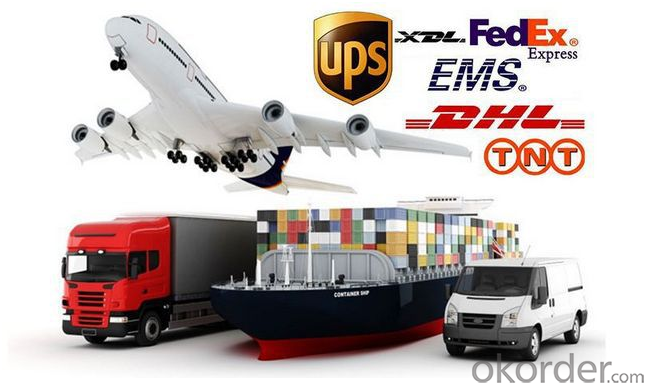
Photos of products

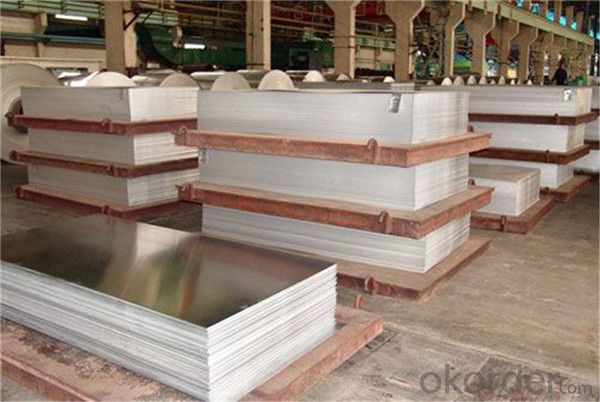
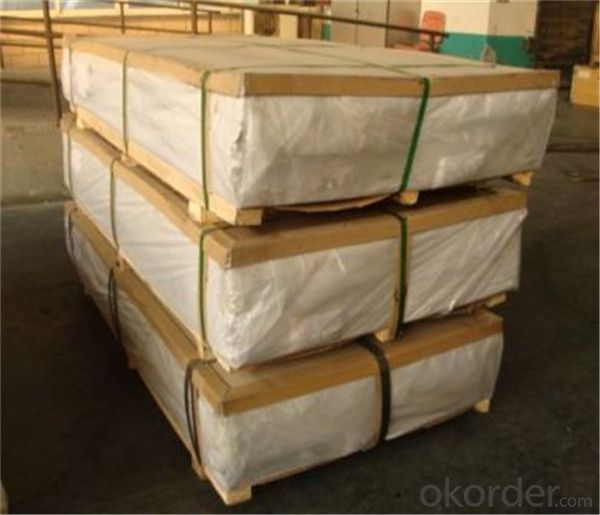
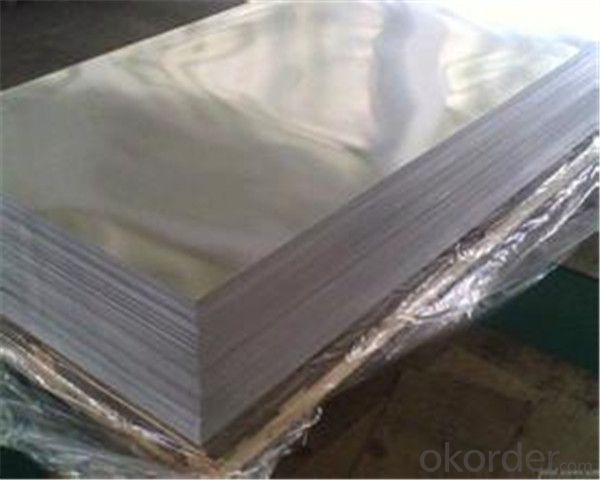
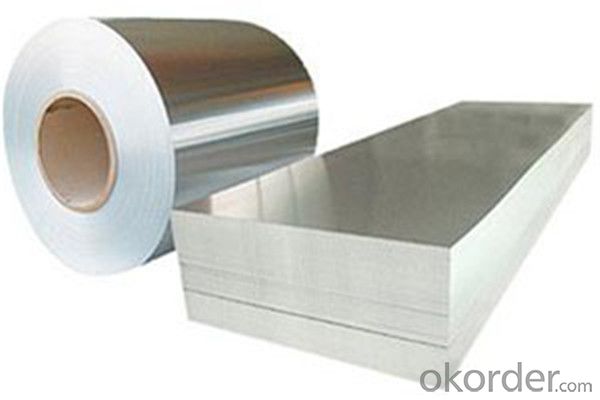
- Q: Can aluminum sheet be painted or coated after fabrication?
- Yes, aluminum sheet can be painted or coated after fabrication. The surface of the aluminum sheet can be prepared by cleaning and etching to ensure proper adhesion of the paint or coating.
- Q: Are aluminum sheets suitable for food processing applications?
- Yes, aluminum sheets are suitable for food processing applications. Aluminum is known for its excellent thermal conductivity and corrosion resistance, making it ideal for food industry processes such as cooking, baking, and packaging. Additionally, aluminum is a lightweight and cost-effective material that can be easily formed into various shapes and sizes, making it convenient for food processing equipment and utensils.
- Q: What specific considerations should be taken into account when using aluminum sheets in cold weather conditions?
- <p>In cold climates, aluminum sheets should be selected with consideration for their thermal expansion properties. It's important to use alloys with low thermal expansion coefficients to minimize distortion. Additionally, the design should account for potential contraction and expansion to prevent warping or cracking. Proper insulation and sealing are crucial to prevent condensation and moisture buildup, which can lead to corrosion. It's also advisable to use thicker sheets to enhance durability and resistance to the elements. Regular inspections and maintenance are recommended to ensure the longevity of aluminum structures in cold environments.</p>
- Q: This question asks for an explanation of the various grades of aluminum sheets and the distinctions between them.
- <p>Aluminum sheets are categorized into different grades based on their alloy composition, which affects their properties such as strength, formability, and corrosion resistance. Common grades include 1000 series (99.00% aluminum, soft and malleable), 2000 series (aluminum-copper alloys, strong and heat treatable), 3000 series (aluminum-manganese alloys, good formability), 5000 series (aluminum-magnesium alloys, good strength and corrosion resistance), and 6000 series (aluminum-silicone-magnesium alloys, good strength and extrudability). Each grade has specific applications based on its characteristics, with 1000 series used for general purposes, 2000 series for aircraft structures, 3000 series for decorative applications, 5000 series for marine environments, and 6000 series for structural components.</p>
- Q: What are the different methods of heat treating aluminum sheet?
- Aluminum sheet can undergo various heat treatment methods, each serving a specific purpose and achieving desired outcomes. Some commonly used methods include the following: 1. Solution Heat Treatment: The aluminum sheet is heated to a specific temperature, typically ranging from 900-1000°F (480-540°C), and kept at that temperature for a designated duration. This process aids in dissolving any soluble alloying elements present in the aluminum, resulting in a more uniform structure. 2. Quenching: Following the solution heat treatment, the aluminum sheet is rapidly cooled by immersing it in water, oil, or air. This rapid cooling helps retain the desired microstructure and properties, such as increased strength and hardness. 3. Aging: After quenching, the aluminum sheet undergoes an aging process. It is heated to a lower temperature, typically between 250-450°F (120-230°C), and maintained at that temperature for a specific period. This allows for the precipitation of fine particles within the aluminum, further enhancing its strength and hardness. 4. Precipitation Hardening: This method is specifically employed for certain aluminum alloys, such as the 2000 and 7000 series, which respond well to precipitation hardening. It involves a combination of solution heat treatment, quenching, and aging, resulting in a highly strengthened and durable aluminum sheet. 5. Annealing: Annealing is a heat treatment process that aims to soften the aluminum sheet and relieve any internal stresses. The sheet is heated to a specific temperature, typically around 600-700°F (315-370°C), and then slowly cooled. This enhances the formability and machinability of the aluminum. 6. Stress Relieving: Similar to annealing, stress relieving is specifically used to reduce residual stresses in the aluminum sheet after fabrication. The sheet is heated to a temperature below its annealing temperature and then slowly cooled. The choice of heat treatment method for aluminum sheet depends on the desired properties, alloy composition, and intended application. Each method offers unique advantages and can significantly enhance the mechanical and physical properties of the aluminum sheet.
- Q: I may use the copper or brass for an inlay on a decorative piece of aluminum I'm working on.....
- aluminum okorder / so what you are finding is that aluminum will melt before the copper or brass...
- Q: I was looking at Audioque subs earlier and what is the difference between copper and aluminum coiled subs. do aluminum last longer or something?
- to maintain it common......Copper is better at removing or soaking up warmth than aluminum yet aluminum is better at dissipating it or doing away with it. i think it is why you spot aluminum CPU coolers with copper cores.
- Q: Can aluminum sheets be used for lithographic printing?
- Yes, aluminum sheets can be used for lithographic printing. Lithographic printing, also known as offset printing, relies on the principle that oil and water do not mix. Aluminum plates are used as the printing surface in lithography because they can retain an image when treated with a combination of chemicals. The image areas attract ink, while the non-image areas repel it. This allows for high-quality and precise printing.
- Q: What are the safety standards for using aluminum sheets in construction?
- <p>Yes, there are safety standards related to using aluminum sheets in construction projects. These standards ensure the material's structural integrity, durability, and safety. They include specifications for thickness, strength, and quality of aluminum sheets, as well as guidelines for their installation to prevent issues like corrosion, fire hazards, and structural failure. Compliance with these standards is crucial for the safety of the construction workers and the longevity of the building.</p>
- Q: Can 101 aluminum sheets be used in food storage containers?
- Using 101 aluminum sheets in food storage containers is not recommended. These aluminum sheets, often referred to as 101 aluminum, are not suitable for storing food as they are not made from food-grade materials. Typically, they are employed in industrial settings like roofing, construction, and electrical wiring. To guarantee the safety and quality of stored food, it is essential to use containers crafted from food-grade materials such as stainless steel, glass, or food-grade plastic.
Send your message to us
Aluminium Sheet With Polykraft Paper For Moisture Barrier
- Loading Port:
- Shanghai
- Payment Terms:
- TT OR LC
- Min Order Qty:
- 5 m.t.
- Supply Capability:
- 100000 m.t./month
OKorder Service Pledge
OKorder Financial Service
Similar products
Hot products
Hot Searches
Related keywords
